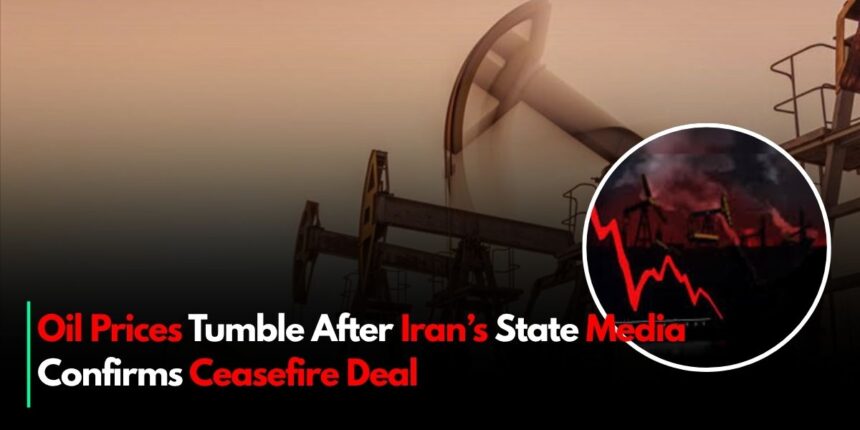Oil prices dropped to their lowest levels in more than a week this week after Iranian state media made an unexpected revelation that a ceasefire deal had been reached with Israel. The deal, which came after twelve days of rising tension, has calmed fears that a larger war may impede oil supplies, notably through the strategically important Strait of Hormuz.
What Happened Right Away in the Market
Brent oil futures fell about 3% on Tuesday, finishing at about $69.40 per barrel. U.S. West Texas Intermediate (WTI) fell to $66.48, which was a big dip following a big rise in the previous session. The revelation took away a lot of the so-called “war premium” that had built up because of threats to the Strait of Hormuz and possible supply problems.
President Trump of the United States unexpectedly called for calm when he said that Iran had started a ceasefire procedure that Israel would follow after twelve hours. Within 24 hours, a formal end to the war was expected.
Tony Sycamore, an analyst at IG, said, “The risk premium that was built into crude prices has disappeared.”
Why the Drop Matters
About 20 million barrels of oil pass through the Strait of Hormuz every day, which is about 20% of the world’s daily oil use. The ceasefire eases worries that Iran would attack this important conduit. Missile attacks on U.S. bases in Qatar and Israel had already made people more worried about a possible strategic escalation.
But the decline in the market also showed that people were sure Iran wasn’t trying to stop oil exports, probably because the cost of doing so would be higher than the political benefits.
What Analysts Think
The conclusion of a violent rally came when Brent fell below $70 per barrel. Earlier, oil prices rose to $81.40 because of worries of war, but they fell by almost $2 in subsequent market sessions. businessinsider.com
Priyanka Sachdeva, a senior analyst at Phillip Nova, said that the ceasefire “made it possible for things to go back to normal.”
ainvest.com +1. Rystad Energy also said that Iran’s measured response, which didn’t target chokepoints, showed a desire for de-escalation.
businessinsider.com and ft.com are two good sites to check out.
The ceasefire is still not very strong, though. Analysts say that if something unforeseen happens in the Strait, prices could go up a lot again. Sycamore warned that “something unexpected and bad for supply” would have to happen to bring oil back up to resistance levels above $78–80.
Effects on the Market as a Whole
The stock markets went up when oil prices went down. The U.S. stock market futures went up, and the FTSE 100 and other European indices and the Asia-Pacific markets also went up a little. Gold went down a little bit as world tensions relaxed.
What’s Next
Traders are all breathing a sense of relief right now. But people are still paying attention to the ceasefire, political talk, and concerns in the region. Prices will probably be affected in the near future by whether or not Iran and Israel keep their end of the deal.
According to economists at Deutsche Bank and RBC, a long-lasting peace may keep oil prices between $65 and $75. But any flare-ups, especially in the Strait, may make markets unstable again.
In short, the unexpected ceasefire between Iran and Israel, which was announced by Iranian state media and supported by U.S. diplomatic oversight, caused oil prices to plummet sharply. As the risk premium goes down, markets expect that things stay peaceful, but analysts say that if tensions rise again, things will get volatile again.










